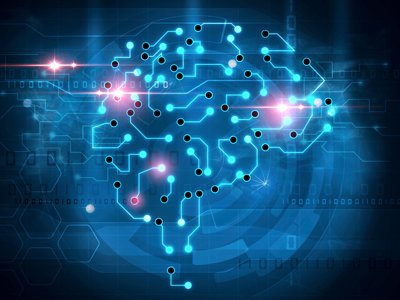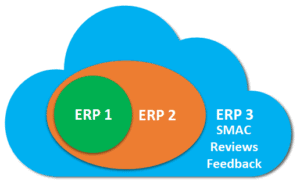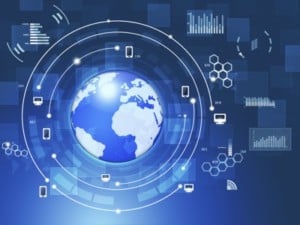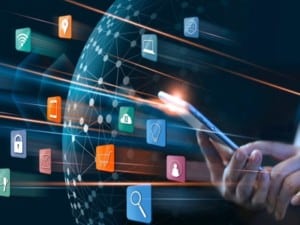
Another post in our series on Digital Business Transformation success.
In our previous post on Why So Many Struggle with Digital Transformation, we discussed the major problem with Digital initiatives, a lack of clarity being one of the causes of their frequent failure. If Digital has no meaning, then it has no focus.
Digital is now a marketing buzzword to rebrand all of IT or technology as innovative. The rebrand creates an underlying message that all of your competitors are doing it, so if you don’t, then your competitors will put you out of business. While business life-cycles are getting shorter and shorter, the current approach to how the marketplace defines Digital is part of the problem and not part of the solution.
How do we define Digital? At its most basic:
“Digital Business” is completely and totally focused on the customer and your marketplace.
To take this one step further, technology is the enabler, but digital is the approach to business. Digital is more about the “front office” or customer focus, and only involves the back office as it directly relates to customer engagement, customer fulfillment, and customer interaction. Being “Digital” means addressing ROI through leading indicators of business success, such as the following:
- revenue growth
- market penetration
- customer acquisition
- customer retention
- customer satisfaction
- how you service your customers
- new sales channels
- new sales models
- etc.
We hear all the time about “Digital Supply Chain” or “Digital Manufacturing.” However, unless you have a focus on “Digital,” it becomes nothing but another name for all technology. Supply chain back office solutions have been around for decades and are where many ERP systems started. And this illustrates the problem of Digital meaning nothing because we attempt to make it mean everything.
Operations and supply chain improvements are important, even critical, but they are also table stakes with well-known solutions. To the extent they include customer-centric solutions such as IoT (capturing customer data to provide better or more timely service), blockchain (transactional registers to guarantee authenticity), or even delivery time and customer visibility improvements, they may be Digital. However, if these aspects do not directly impact your customers, then we suggest they are not truly Digital.
Digital Business, Customer Focus, and the ERP III Borderless Enterprise

ERP 3 Digital Transformation
Using the classic, “crawl, walk, run, fly” approach, we defined Digital a decade ago in ERP vs. ERP II vs. ERP III Future Enterprise Applications. Additionally, we have been working with “Digital” for over two decades. Our definition starts with the history of enterprise systems beginning with ERP 1 (back-office), through second generation ERP 2 (extended supply chain integration), and finally to ERP 3 (integration of the marketplace through the “Borderless Enterprise”). This next evolution of the “Borderless Enterprise” is wholly focused on the end customer that is Digital.
Our rational approach to technology advancement in the enterprise is supported by dozens of peer-reviewed publications, references in books, and numerous international conferences (see these Google Scholar Search Results for a partial list). Our customer- and market-focused “borderless enterprise” definition provides meaningful evaluation boundaries. The definition moves Digital past meaningless, open-ended interpretations of any and all technology to the critical areas of marketplace competition.
Our Digital Definition Provides Real Guideposts for Understanding and Success
Digital involves IT convergence with business and the marketplace, especially in the ERP-enabled enterprise. You must prepare your organization for the changes that are beginning to shape the future of enterprise applications, or “ERP III”.
Through collaboration, direct contact, social media, and various data streams within and outside of the enterprise, ERP iii integrates marketplace fans and critics into the extended ERP and ERP ii organizations. From this integration of the customer and vendor a constructive dialog and exchange of information is created to innovate, produce, and then sell/distribute better products or services. This closes the value proposition loop by going outside of the enterprise boundaries and finding ways to bring customer input, needs, wants, and insight into the enterprise. ERP iii systems create a strong synergy between innovation and customer focus.
To summarize the different ERP stages we defined over a decade ago in ERP vs. ERP II vs. ERP III Future Enterprise Applications:
ERP i applications integrate enterprise operations within and across enterprise legal entities, or company codes.
In other words, think of basic back-office finance and procurement.
ERP ii (or ERP 2) applications extend supply functionality to external enterprises (generally vendor-affiliated companies or enterprises) to reduce cost, improve supply chain efficiency, and to perform collaborative innovation.
This would include integrated supply chain functionality, external integration like EDI, reverse auctions, JIT demand signals, and collaborative engineering and design.
ERP iii (“Digital” or ERP 3) enterprises go to the next level of integrating the ERP i and ERP ii functionality to include customers and the sales side of the marketplace into enterprise operations. Your customers become active participants in your business.
Some of the technology landscape this encompasses include Social, Mobile, Analytics, and Cloud (SMAC). In the context of SAP solutions, it adds the gathering of survey and customer feedback data through Qualtrics or external social media sentiment tools, and then deploying those insights throughout IT and the business. Then, you have the addition of new sales channels and changing business models that encompass the ERP III Borderless Enterprise Digital Business Model.
Keep in mind that SMAC, Qualtrics, and new sales channels are just the beginning. Customer focus and marketplace integration is a journey, not a destination. As soon as you have arrived at your destination, your competitors are continuing the journey, with or without you! A continuous innovation capability is key to long-term success.
Stay tuned as we continue to lay out the entire digital business transformation journey, with key milestones on your way to long-term success!





